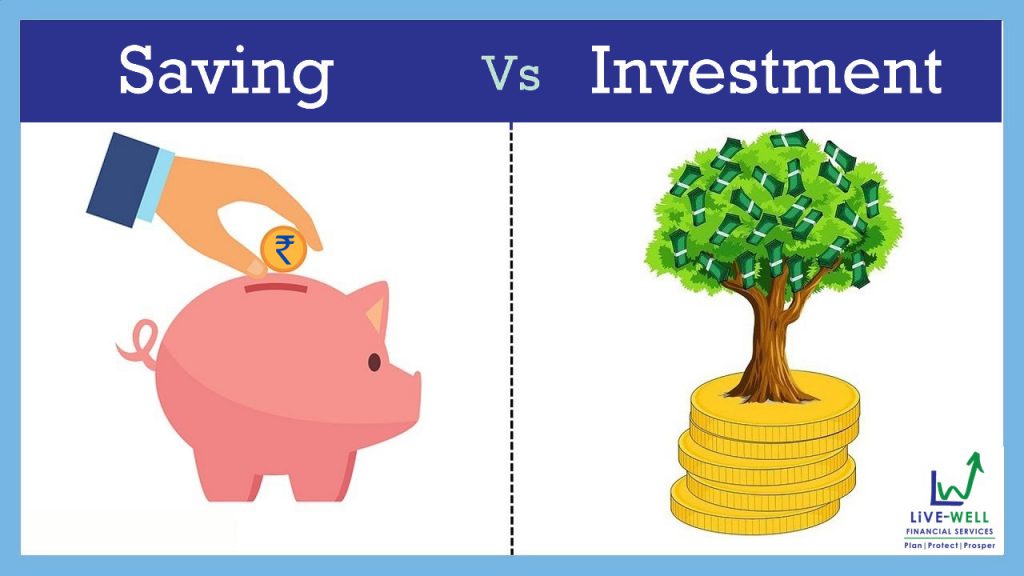
There is a significant difference between savings and investment, and understanding this difference is crucial for managing your finances effectively and working toward your financial goals. While both savings and investments involve setting aside money, they serve different purposes and have distinct characteristics.
Savings:
Purpose: Savings refer to the money you set aside for short-term goals, emergencies, and everyday expenses. It acts as a safety net to cover unexpected expenses or situations.
Risk: Savings are generally low-risk or risk-free. They are often kept in easily accessible accounts like savings accounts, fixed deposit (FDs), or money market instruments.
Returns: Savings typically earn lower interest rates compared to investments. However, the focus of savings is on liquidity and stability rather than maximizing returns.
Time Horizon: Savings are meant for the short term and are easily accessible. You can withdraw money from your savings accounts without much delay.
Examples: Emergency funds, funds for upcoming vacations, down payment for a car, etc.
Investment:
Purpose: Investments involve putting your money into various assets with the goal of generating returns over the long term. The aim is to grow your wealth and potentially achieve financial goals such as retirement, education, or major purchases.
Risk: Investments carry varying degrees of risk, depending on the type of investment. Some investments, like stocks, have higher potential returns but also come with higher risk, while others, like government bonds, have lower risk and lower potential returns.
Returns: Investments have the potential for higher returns compared to savings. However, they are not guaranteed, and there is always the possibility of losing money, especially with riskier investments.
Time Horizon: Investments are generally intended for the long term. They require a longer time horizon to allow your money to grow through the power of compounding.
Examples: Stocks, bonds, real estate, mutual funds, exchange-traded funds (ETFs), etc.
Does It Matter?
Understanding the difference between savings and investments matters for several reasons:
Financial Goals: Knowing the distinction helps you allocate your money effectively based on your short-term and long-term financial goals.
Risk Management: Understanding the risk associated with each can help you create a balanced financial strategy that aligns with your risk tolerance.
Return Expectations: Differentiating between savings and investments helps you set realistic return expectations and plan for your financial future accordingly.
Emergency Planning: Having a well-funded emergency savings account ensures you are prepared for unexpected expenses without having to dip into your long-term investments.
Retirement Planning: Distinguishing between the two is essential when planning for retirement, as you will need a combination of both savings and investments to ensure a comfortable retirement.
In summary, while both savings and investments are crucial components of a healthy financial plan, understanding the differences between them helps you make informed decisions about how to allocate your money and work toward achieving your financial objectives.
